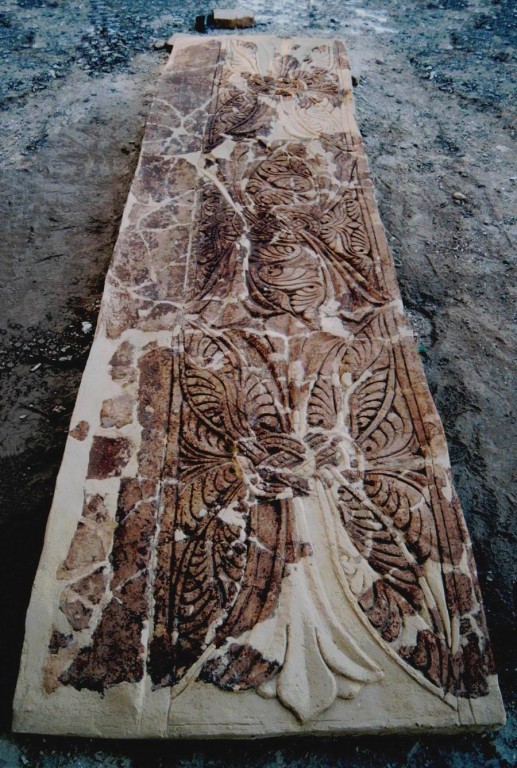Sasanian stucco from eastern #Iran
گچبری ساسانی در خراسان
In recent years, at least 4 sites (Bandian, Mele Hairam now outside Iran's borders, Bazeh Hur, Shilgan) have been excavated which give us a much better idea of this art form in eastern Iran, including Khorasan
⤵️
گچبری ساسانی در خراسان
In recent years, at least 4 sites (Bandian, Mele Hairam now outside Iran's borders, Bazeh Hur, Shilgan) have been excavated which give us a much better idea of this art form in eastern Iran, including Khorasan
⤵️

I'm still waiting on more publications from this site
but see publications by Barbara Kaim, e.g., Victorious fire at Mele Hairam, in: Historical and Cultural sites of Turkmenistan
⤵️

but see publications by Barbara Kaim, e.g., Victorious fire at Mele Hairam, in: Historical and Cultural sites of Turkmenistan
⤵️


2) Bandian: I've talked about this major site before and here will only provide a few examples of stuccos
There are also MP inscriptions at this site which have been published
The main paper to refer to for comparisons of all 4 sites is "Sasanian Stuccos of Northeastern Iran"
There are also MP inscriptions at this site which have been published
The main paper to refer to for comparisons of all 4 sites is "Sasanian Stuccos of Northeastern Iran"

3-4) Bazeh Hur, Shilgan (and their comparison to the other sites)
First these pieces @ museum of Khorasan. I'm not sure what site they're from
⤵️


First these pieces @ museum of Khorasan. I'm not sure what site they're from
⤵️



Bazeh Hur and Shilgan
A large number of stucco and other pieces from recent finds in Iran are unfortunately unpublished
⤵️

A large number of stucco and other pieces from recent finds in Iran are unfortunately unpublished
⤵️


A few more comparisons.
Overall, these 4 sites are v important in history of Sasanian art, including stucco.
I'm sure more and more ancient sites will be found all around Iran, as has been the case in the past few decades.



Overall, these 4 sites are v important in history of Sasanian art, including stucco.
I'm sure more and more ancient sites will be found all around Iran, as has been the case in the past few decades.




• • •
Missing some Tweet in this thread? You can try to
force a refresh

























































